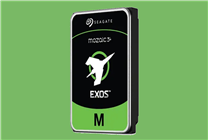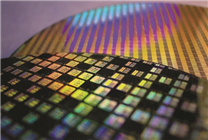Summary:
- Huawei is expected to launch multiple Kirin processors, including the Kirin 9030, in Q4 of this year.
- The Kirin 9030 may utilize an advanced 5nm process, signaling significant technological advancements from domestic manufacturers.
- The development of the N+3 manufacturing process by SMIC positions it competitively among industry leaders like TSMC and Samsung.
Huawei’s Kirin 9030: A Leap Forward in Mobile Processing Technology
As of September 5, insightful reports indicate that Huawei is on the brink of unveiling several new Kirin processors, with the highly anticipated Kirin 9030 expected to make its debut in the fourth quarter of this year. This announcement represents a significant moment in the mobile technology landscape, particularly as Huawei faces ongoing shifts within the semiconductor industry.
A Promising Future for Kirin Processors
Industry insiders have confirmed that the new lineup will include multiple models of the Kirin processor. The confidence in launching these processors hints at a robust domestic production capability, suggesting that previous U.S. sanctions have had a diminishing impact. This marks a noteworthy milestone for Huawei, reflecting the company’s resilience in overcoming regulatory hurdles.
The Kirin 9030 is speculated to leverage a revolutionary 5nm manufacturing process. According to preliminary leakages tied to SMIC’s developments, the anticipated performance metrics could place it ahead of the competition. The groundwork laid by the Kunpeng 930 suggests that the chips may not only meet but possibly exceed the standards established by current market leaders.
Unpacking the N+3 Process
A recent analysis introduced the N+3 process, asserting its reliability and performance metrics. With an astonishing transistor density of 125MTr/mm—comparable to TSMC’s best offerings—this process signifies a formidable step for SMIC. To put this into perspective, the N+3’s density significantly exceeds that of earlier processes, registering over a 250% increase from the base 14nm process.
While the naming convention of N+3 may evoke comparisons to "equivalent 5nm" processes, its actual performance attributes showcase its competitiveness. When juxtaposed against TSMC’s N6 and N7P technologies, the efficiency of SMIC’s N+3 could be slightly behind—approximately 15% to 20%—attributable chiefly to limitations in advanced lithography due to EUV equipment shortages.
Implications for the Domestic Chip Industry
The advancements represented by the Kirin 9030 and the N+3 process are transformative for the domestic chip manufacturing landscape. Historically reliant on older manufacturing techniques, this shift enables local manufacturers to compete on a global scale, alleviating significant technological bottlenecks that have hindered progress in the sector.
The potential for energy efficiency, coupled with enhanced transistor performance, places domestic semiconductor developments in a promising light. This capability not only positions Huawei as a significant player but also symbolizes a broader victory for Chinese technology firms seeking to establish autonomy in semiconductor production.
Conclusion
The impending launch of the Kirin 9030 underscores Huawei’s commitment to innovation in the rapidly evolving mobile processing arena. With significant advancements in manufacturing processes and increased transistor densities, the Kirin series is set to reshape consumer expectations and competitive dynamics in the industry. The move towards advanced in-house solutions signals a pivotal moment for Huawei and the overall landscape of semiconductor technology, reinforcing the potential of domestic capabilities.
As the industry watches closely, the Kirin 9030 and its accompanying models could very well redefine the future of mobile processing, presenting exciting opportunities and challenges for competing firms worldwide.







